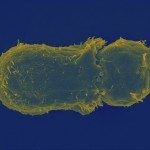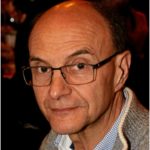Link to Pubmed [PMID] – 2481585
Eur. J. Immunol. 1989 Dec;19(12):2183-9
Human T cells can be activated and induced to proliferate through either the antigen-specific receptor complex (TcR-CD3) or the CD2 surface molecule. Following stimulation, both serine and tyrosine phosphorylation of cellular protein have been demonstrated to occur. p56lck, a protein tyrosine kinase associated to the inner face of the plasma membrane, is almost exclusively expressed in lymphoid cells, especially T cells. Within minutes after activation of a human T cell-derived line (Jurkat) via stimulation of either the TcR-CD3 complex or the CD2 glycoprotein, we observed a hyperphorphosylation of p56lck. A concomitant shift to a higher molecular weight in sodium dodecyl sulfate-polyacrylamide gel was also observed. Similar changes were obtained with phorbol 12-myristate 13-acetate. Tryptic phosphopeptide analysis of the hyperphosphorylated form of p56lck yielded new phosphorylated sites in serine residues and an increased tyrosine phosphorylation. These results suggest that p56lck may be intimately connected to the signaling pathway in T cell activation.

